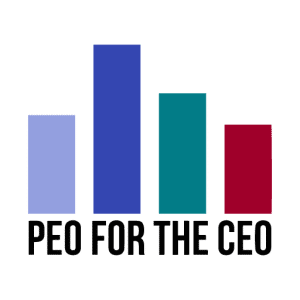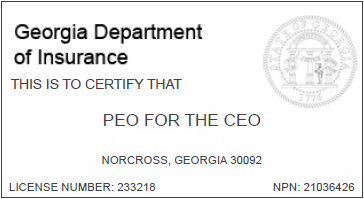Health-Insurance Premiums Are Rising — What Employers Should Do Now
If you oversee employee benefits, payroll, or HR in your organization, you’re likely
bracing for what many are calling one of the tougher health-insurance renewal seasons
in recent memory. Two recent reports point to clear trends: rising premiums for
employer-sponsored plans, and the increasing pressure on both employers and
employees. For business owners and HR leaders contemplating the role of a PEO, the
timing couldn’t be more critical.
🧩 What the data say
According to KFF’s 2025 Employer Health Benefits Survey, the average annual premium for employer-sponsored family coverage reached $26,993 this year — up 6 % from 2024. Health Policy Institute of Ohio+3HR Brew+3KFF+3 For single coverage, the average premium climbed to $9,325, a 5 % year-over-year increase. HR Brew+1
Workers are picking up a meaningful part of the tab: for single coverage plans they’re paying roughly 16 % of premium costs from their paychecks, while for family plans the average worker share rises to more than 26 %. HR Brew
Meanwhile, SHRM research indicates that employers expect health-benefit costs per employee to rise about 6.5 % on average in 2026 — the highest increase seen in more than a decade. SHRM
🧩 What’s driving the increases
A few major cost-drivers are consistently cited:
- Prescription-drug spending — especially new, specialty therapies such as GLP-1 medications used for weight management — is increasingly significant. HR Brew+1
- Higher service utilization: more people are seeking care, including for chronic conditions, and hospitals continue to raise prices. RISE Health+1
- Inflation in the broader economy — wages for health-care professionals, equipment, and facility costs are all increasing, and insurance premiums follow. KFF Health News+1
- For smaller firms in particular, employee deductibles and out-of-pocket cost burdens are rising faster. RISE Health
⚖️ Why this matters to you as a business owner or HR leader
- Budget pressure: A 6 %+ jump in premiums means significantly higher expenditure for the same coverage. For a company covering 100 family plans, that’s a six-figure increase.
- Employee cost burden: As employer costs rise, many organizations feel compelled to shift a greater share of cost to employees (higher premiums, higher deductibles, tighter benefit design) — a move that may negatively impact retention, engagement, and employer branding. SHRM+1
- Employee cost burden: As employer costs rise, many organizations feel compelled to shift a greater share of cost to employees (higher premiums, higher deductibles, tighter benefit design) — a move that may negatively impact retention, engagement, and employer branding. SHRM+1
- Compliance and risk: As costs escalate, so do the stakes for ensuring benefit programs are well managed, compliant, efficiently administered and aligned with your broader workforce strategy.
Example: One client shifted from an HSA match to an HRA deductible offset model and saved over $50,000 annually while keeping employees’ out-of-pocket costs manageable.
🧠 How a PEO model can help
At PEO For The CEO LLC, this is precisely the environment in which a PEO can deliverreal value.
Here’s how:
- Economies of scale: By aggregating groups across multiple clients, a PEO can negotiate better rates with carriers, mitigate premium escalation, and spread risk more broadly.
- Streamlined vendor / administrative burden: As you’re already helping clients consolidate HR, payroll, benefits and workers’ compensation vendors, a PEO reduces complexity and frees up internal time to focus on strategic issues rather than plan-administration headaches.
- Benefit design expertise: PEOs can bring sophisticated plan-design options — alternative funding, wellness programs, carrier networks, pharmacy-benefit management — that may not be feasible for smaller employers on their own.
- Cost-sharing strategy and employee communication: As the premium and cost-sharing burden shifts, effective communication and strategy matter. A PEO can support implementation of cost-share design changes and help the workforce understand what those mean — important to avoid employee dissatisfaction or surprise.
- Proactive planning for future inflation: With expected cost upticks in 2026 (per SHRM’s data), working with a PEO gives you access to benchmarking insights and earlier renewal strategy — the ability to anticipate rising costs rather than simply react.
🏆 Key action steps for your upcoming renewal
- Benchmark now: Compare your current premiums, cost-shares and plan design to the KFF national averages ($26,993 for family coverage) and industry peers.
- Engage carriers early: With premiums rising and carriers facing higher utilization and drug costs, early conversations can yield better options or lock in rates.
- Examine plan design: Consider whether deductible levels, out-of-pocket maximums or cost-sharing models need adjustment. But balance the employee impact — retention matters.
- Enhance wellness & utilization management: Programs targeting chronic disease management, lifestyle change (especially if GLP-1 drugs affect your population) and utilization review can reduce cost trend.
- Communicate with employees: If cost-shares or plan designs change, clear messaging helps avoid dissatisfaction or misunderstanding.
- Consider a PEO: If you’re in growth mode, multi-state, or looking to consolidate HR/benefits/payroll vendors (as you’ve done many times), adding a PEO partner can be a strategic lever to manage cost escalation and simplify operations.
📩 Conclusion
Rising health-insurance premiums are not just “another line item” — they’re a critical strategic issue that intersects with talent management, operational efficiency, and financial planning. As the recent reports from KFF and SHRM make clear, the upward pressure is real, and the window to act is now
At PEO For The CEO, we specialize in helping businesses like yours evaluate competitive PEO options, conduct side-by-side comparisons on benefits/HR/payroll/workers’ comp, and ensure you’re positioned for both cost containment and strategic growth. If you’re facing a renewal, expecting expansion, or simply want to evaluate whether a PEO model can give you breathing room in the face of rising premiums, let’s connect.
About Suzanna Martinez
Suzanna Martinez is the founder of PEO For The CEO, bringing
20+ years of experience working for multiple PEO companies.
She has guided hundreds of businesses in Georgia and Colorado
to streamlined HR operations and significant cost savings.
Suzanna specializes in negotiating large-group health insurance
rates and matching businesses with the right PEO partner.


